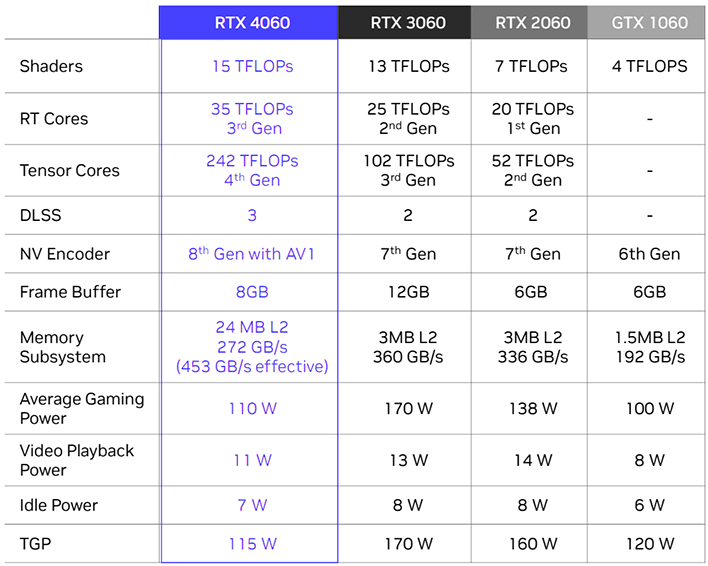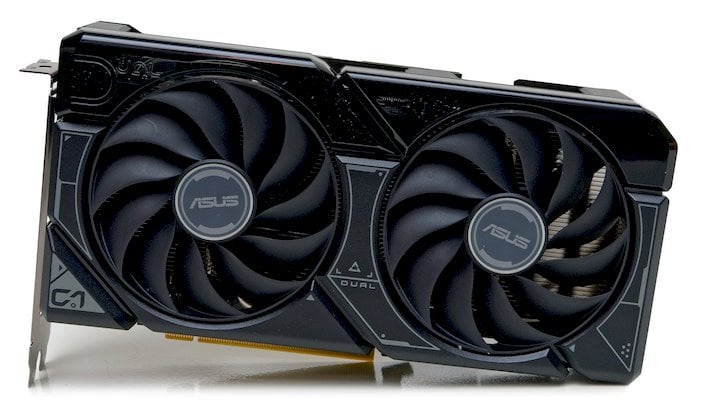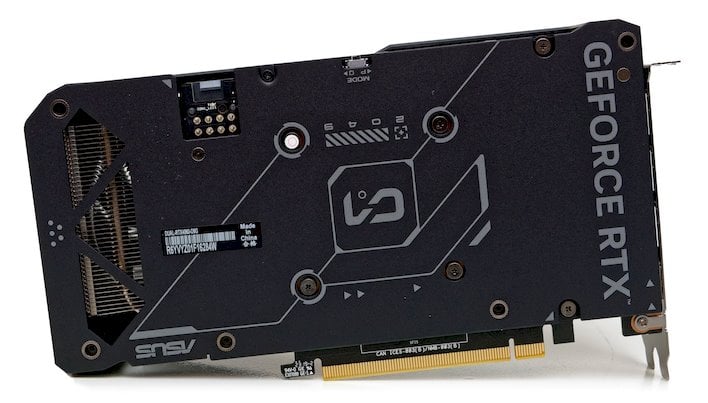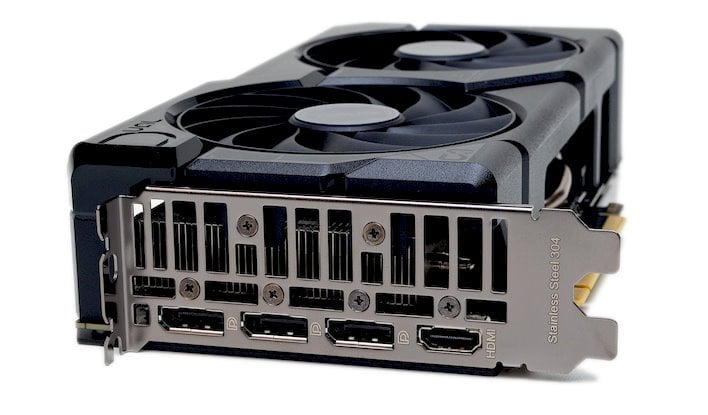NVIDIA GeForce RTX 4060 Review: Affordable Cutting-Edge Gaming
GeForce RTX 4060: NVIDIA's Most Affordable Ada GPU Brings The Company's Latest Graphics Tech To Mainstream Gamers
| NVIDIA GeForce RTX 4060: Starting At $299 The new GeForce RTX 4060 is NVIDIA's current entry-level Ada GPU, which targets budget-conscious 1080p gamers shopping for an upgrade from previous-gen graphics cards.
|
|||

|

|
||
NVIDIA announced the GeForce RTX 4060 series a few weeks back, which consisted of a pair of GeForce RTX 4060 Ti cards, in 8GB and 16GB flavors, and the more mainstream base-model GeForce RTX 4060. The first card to hit with the GeForce RTX 4060 Ti 8GB model, which we recently evaluated, but today NVIDIA pushes its leading Ada Lovelace GPU architecture to its lowest price point yet with the GeForce RTX 4060.
The GeForce RTX 4060 targets 1080p gamers and creators looking for a competitive graphics card with leading edge feature support. It’ll require some testing to see if the GeForce RTX 4060 is such a card, but of course we were up for the task. Without further delay, let’s check out some specs and other particulars, and then we’ll take the GeForce RTX 4060 for a spin to see what it can (or can’t) do. Let’s get started...
NVIDIA GeForce RTX 4060 Features & Specifications
| Graphics Processing Clusters | 3 |
| Texture Processing Clusters | 12 |
| Streaming Multiprocessors | 24 |
| CUDA Cores (single precision) | 3072 |
| Shader FLOPS | 15 |
| Tensor Cores | 96 (4th Generation) |
| Tensor FP8/INT8 TFLOPS/TOPS w/ Sparsity | 242 |
| RT Cores | 24 (3rd Generation) |
| RT FLOPS | 35 |
| Texture Units | 96 |
| ROP Units | 48 |
| Base Clock | 1830 MHz |
| Boost Clock | 2460 MHz |
| Memory Clock | 8500 MHz |
| Memory Data Rate | 17 Gbps |
| L1 Data Cache/Shared Memory | 3072 K |
| L2 Cache Size | 24576 K |
| Total Video Memory | 8 GB GDDR6 |
| Memory Interface | 128-bit |
| Total Memory Bandwidth | 272 GB/s (453 GB/sec effective)* |
| Texture Rate (Bilinear) | 236 GigaTexels/second |
| Max Display Resolution | 4K at 240Hz or 8K at 60Hz with DSC |
| Fabrication Process | 4N NVIDIA Custom Process |
| Transistor Count | 18.9 Billion |
| Connectors | 3 x DisplayPort 1 x HDMI |
| Form Factor | Dual-Slot |
| Power Connectors | 1 x PCIe 8-pin cable OR PCIe Gen 5 cable |
| Required System Power Supply | 550 Watts |
| Video Engines | 1xNVENC (8th Gen) 1xNVDEC (5th Gen) |
| Power | 7W Idle, 11W AV1 Video Playback, 110W Average Gaming Power (AGP), 115 W Total Graphics Power (TGP) |
| Max GPU Temperature | 90° C |
Unlike the AD106-based GeForce RTX 4060 Ti which launched a few weeks back, the GeForce RTX 4060 is built around NVIDIA's AD107 GPU. Although the AD107 is based the same Ada Lovelace GPU architecture as all of the previously-launched cards in the GeForce RTX 40 series, the other cards in the series all use different chips. The flagship RTX 4090 is built around the largest AD102 GPU, the GeForce RTX 4080 uses the smaller (but still large) AD103, the GeForce RTX 4070 Ti and 4070 use the smaller AD104, and the GeForce RTX 4060 Ti uses the AD106. The AD107, however, is NVIDIA's smallest Ada GPU yet.

Full-Featured AD106 (Left), GeForce RTX 4060 Ti (Middle), AD107 GeForce RTX 4060 (Right) - Note The Different NVENC / NVDEC Configs And SMs
In terms of feature support, the AD107 is identical to its larger siblings. All of the GPUs offer the entirety of features inherent to the Ada Lovelace architecture, like DLSS 3 and other NVIDIA technologies like NVIDIA Reflex latency reduction, hardware AV1 encoing, NVIDIA Broadcast, Ansel, G-SYNC, Omniverse, optional Studio drivers, and GeForce Experience, to name just a few. For a more detailed explanation of the Ada Lovelace GPU architecture, we suggest reading this article and checking out our launch coverage of the flagship GeForce RTX 4090 while you’re at it. There's lots of foundational information in those two pieces that will help you better understand all of the new features offered by NVIDIA latest architecture which we won't be duplicating again today.
The AD107 GPU as configured on the GeForce RTX 4060 is scaled down in a few key ways. The AD102 on the RTX 4090 has 11 GPCs, 64 TPCs, 16,384 CUDA cores, 512 Tensor cores, and 128 RT cores, with a 384-bit memory interface. The smaller AD103 has 7 GPCs, 38 TPCs, 9,728 CUDA cores, 304 Tensor cores, and 76 RT cores, with a 256-bit memory interface. In its full configuration, the AD104 has 5 GPCs, 30 TPCs, 7,680 CUDA cores, 240 Tensor cores, and 60 RT cores, with a 192-bit memory interface. Which brings us to the AD106.
The AD107 as configured on the GeForce RTX 4060 has 3 GPCs, 12 TPCs, 24 SMs, 3,072 CUDA cores, 96 Tensor cores, and 24 RT cores, with a 128-bit memory interface, whereas the AD106 on the RTX 4060 Ti has 3 GPCs, 17 TPCs, 34 SMs, 4,352 CUDA cores, 136 Tensor cores, and 34 RT cores, with a 128-bit memory interface. The AD107 chip is scaled down in almost every way that affects compute and rasterization performance. Scaling back the AD107 brings its transistor count down significantly, though; whereas the AD104 used on the RTX 4070 packs 35.8 billion transistors, and the AD106 on the 4060 Ti comes in at 22.9B, the AD107 is "only" 18.9B. For reference, the AD103 is 45.6B and the AD102 a whopping 76.3B.
The GeForce RTX 4060's typical boost clock should hover in the 2,460MHz range and the 8GB of GDDR6 memory on the card operates at an effective data rate of 17Gbps, which equates to just over 272GB/s of memory bandwidth over the card's 128-bit memory interface. The much larger L2 cache in the GPU versus previous-gen offerings, however, results in far more efficient use of that memory bandwidth. NVIDIA says that the GeForce RTX 4060's memory bandwidth is roughly equivalent to an Ampere GPU with 453GB/s of bandwidth.
Versus the previous-gen GA104-based GeForce RTX 3060, the AD106 powering the GeForce RTX 4060 also appears to be scaled back in a few ways. The newer AD107, as configured on the RTX 4060, has fewer cores but operates and higher frequencies. It has fewer ROPs and a narrower memory interface (128-bit vs. 192-bit) too. These apparent deficiencies could be mostly mitigated, however, due to enhancements in the more advanced Ada Lovelace architecture, like its larger caches, and higher clocks, etc. One area where a 12GB GeForce RTX 3060 will always have an advantage though is frame buffer size -- there's no making up for a 50% larger frame buffer (8GB vs. 12GB) if a game consumes all of that memory for assets.
Meet The ASUS GeForce RTX 4060 DUAL
NVIDIA isn’t launching a Founders Edition GeForce RTX 4060 and is counting on its partners for both “stock” clocked RTX 4060s and “hot” clocked versions (which we’ll be covering tomorrow).For the purposes of today’s review, we got our hands on an ASUS GeForce RTX 4060 DUAL, which should be hitting store shelves at NVIDIA’s stated MSRP. As its name suggests, the ASUS GeForce RTX 4060 DUAL has a pair of cooling fans, which sit atop a large aluminum heatsink, with quad heat pipes. The cooler on the card actually extends about an inch and a half. The extended area of the cooler allows some air from the rear cooling fan to pass all the way through, whereas the rest is directed over the heatsink fins and ejected from the top and bottom, or out of the chassis through vents in the bracket.
Although the GPU powering the GeForce RTX 4060 is relatively small and quite power friendly, the ASUS GeForce RTX 4060 DUAL is still 2.5 slots wide. The card is not particularly heavy or unwieldy, like some higher-powered behemoths, but it seems consuming 2.5 slots is a bit overkill for the lowest power xx60-series card yet. The overall dimensions of the card are about 9” long and 4.75” high.
In terms of its specifications and features, the ASUS GeForce RTX 4060 DUAL is right in-line with NVIDIA recommendations posted above, though ASUS does customize the card in a couple of ways. First, it requires only a single, standard 8-pin PCI Express power feed. NVIDIA’s specs suggest some boards may use dual PCIe 8-pin connectors or a 12VHPWR ATX 3.0 connector, but all of the boards we’ve seen thus far have only a single connector, which should be more than enough for even overclocked RTX 4060s. The ASUS GeForce RTX 4060 DUAL also has a dual-BIOS switch for performance and silent modes, but it’s mostly unnecessary. This card is super quiet all the time, regardless of which mode is used.
Like most of the other members of the GeForce RTX 40-series, the RTX 4060 also has triple full-sized DisplayPorts and a single HDMI output on its case bracket. That HDMI port is HDMI 2.1-compliant, which enables 120Hz 4K with G-Sync on some of the latest OLED TVs and monitors and allows for 8K resolution over a single cable. The DisplayPorts are only DP1.4, however.
And with all of that out of the way, let’s get into some benchmarks...














